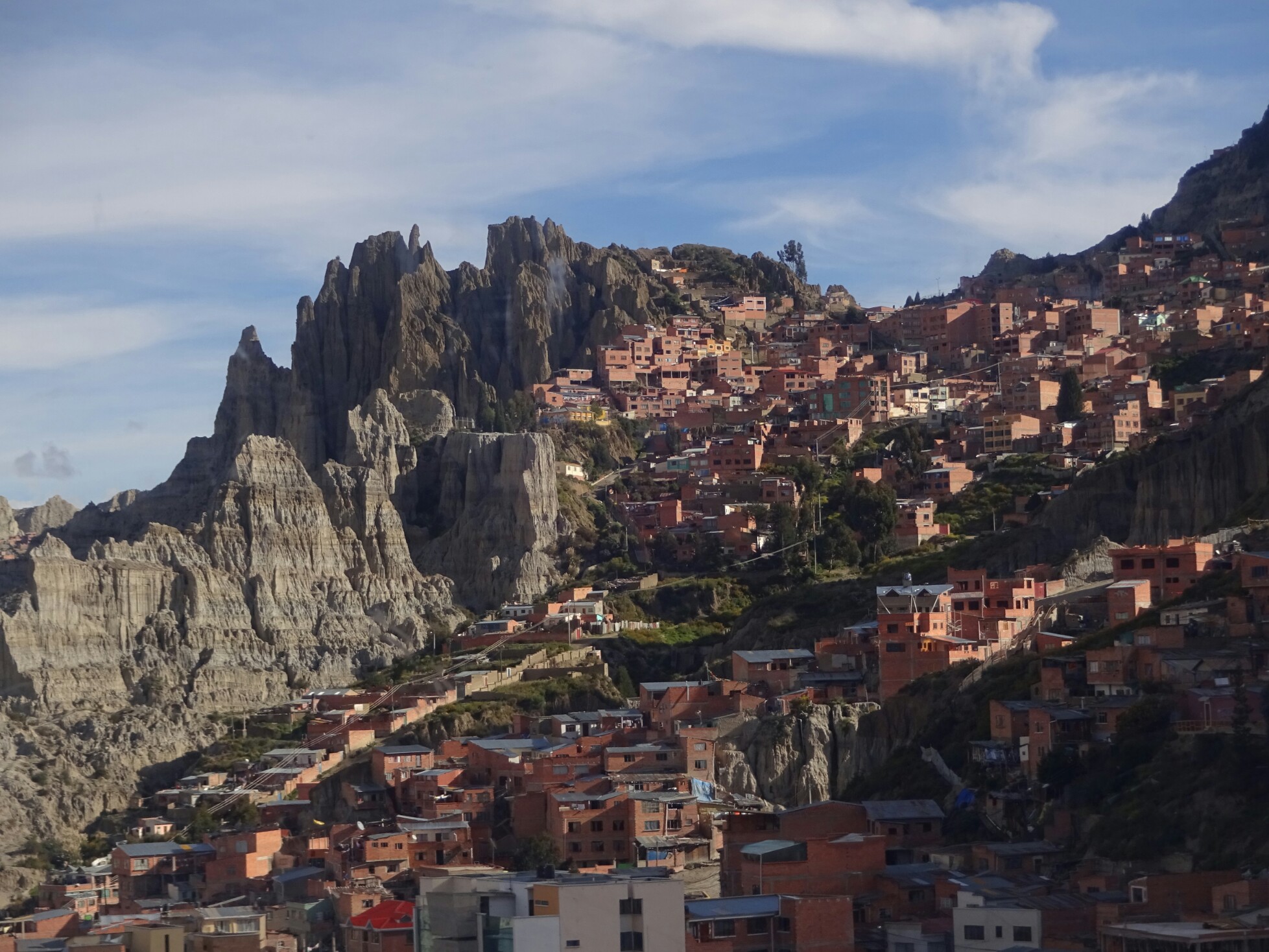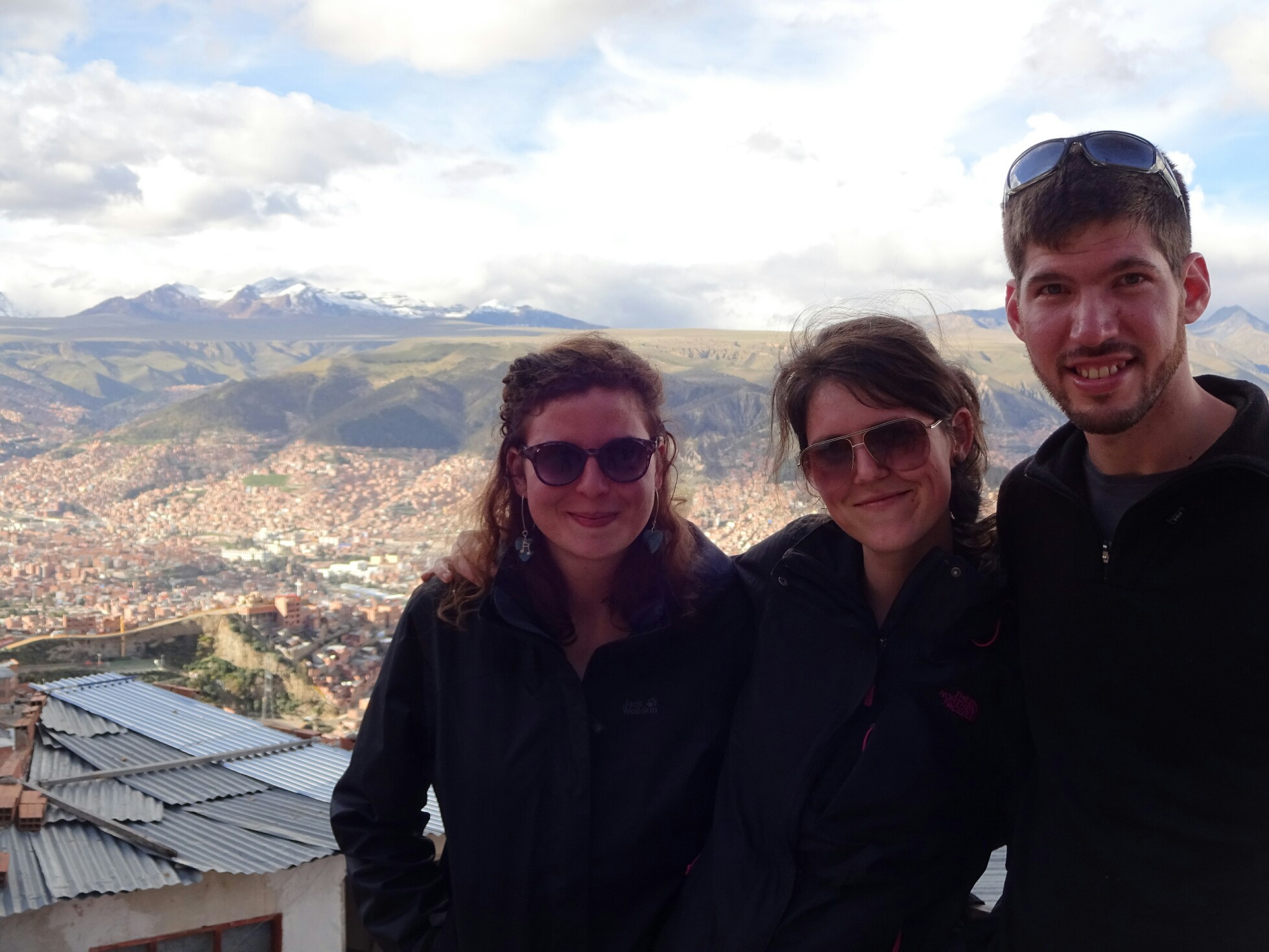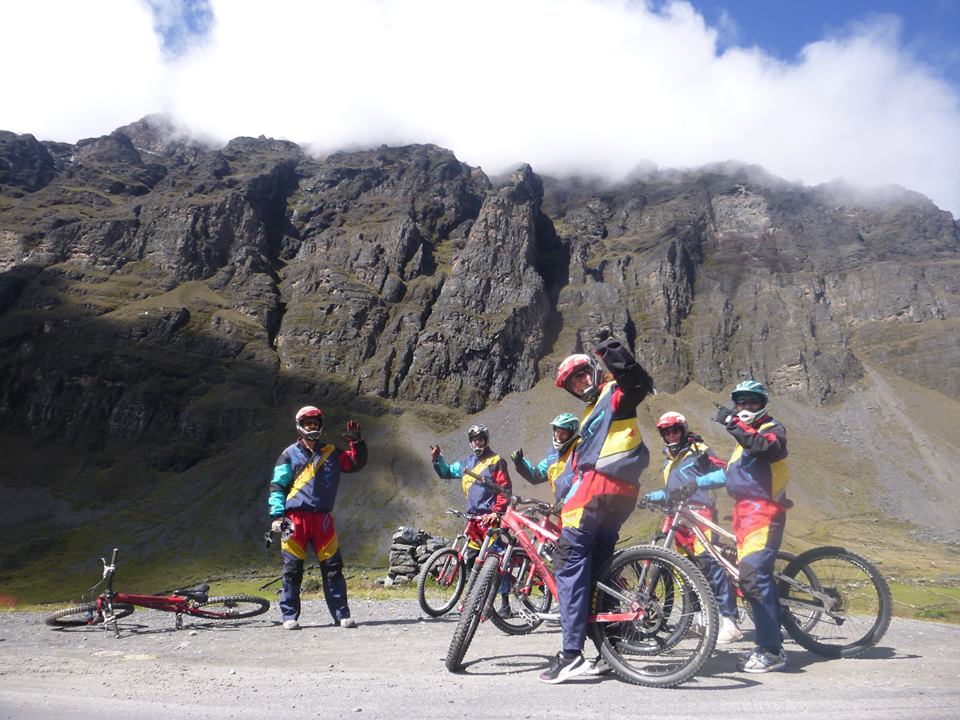From Copacabana we took a bus to La Paz. The bus was rather old and we were quite happy that it didn’t fall apart before we reached our destination. But the ride had several hurdles that we needed to overcome: Shortly behind Copacabana we had to leave the bus for a short passage on Lake Titikaka. While we took a small passenger boat, the bus was transferred on a small pontoon, moved by manpower through poling and a tiny motor.


Some hours later, as we thought we made it to La Paz, the bus started to take tiny roads in really bad condition, either to avoid some tall fees or to stop at the abandoned terminal of El Alto, which is part of the metropolitan area of La Paz. In any case, the last 15 km took us about an hours time, reaching the final terminal in the middle of the night. Luckily the hostel we had chosen was right around the corner and had space for us.

We used the next day to discover more of this vibrant city. We strolled along the busy streets until we reached the yellow “teleferico”, part of a gondola system that connects the city high above the roofs. It’s not only much easier and cheaper to build than a metro system, but it’s also quite easy to cover the large differences in height between the different parts of the city. As a bonus there is a wonderful view of the city with majestic snow-capped mountains in the back.


These mountains were our destination for the following day. We got picked up early in the morning, along with two slightly hungover Israelis and Rick from the Philippines. The minibus took us up to about 4700m, where we got our safety equipment and the bikes. In the distance we could still see some traces of snow from two days ago, when the tour had to start at a lower altitude for safety reasons.

The first part of this 50 km downhill ride was on smooth asphalt. We had the chance to get used to the bikes and take in some of the amazing landscape around us. We were surrounded by a bare alpine flora with waterfalls dropping off the cliffs everywhere. And just when we had gotten used to the easy biking we turned off the road for a short section to avoid a tunnel. Afterwards we boarded the bus again and were taken to the beginning of the actual “Death Road”.


The “Death Road” was built in the 1930s by Paraguayan prisoners to connect the Yungas region, part of Bolivia’s rainforest, with La Paz. Many prisoners died during the construction period, but it didn’t get any safer once was finished. About 200-300 people per year died in accidents on this narrow and winding road up to 2006, when a new road replaced the most dangerous section. Nowadays it is only used by very few locals who live along the way and by adventure tourists like us.


The further we descended on the road, the hotter it got. By then we were surrounded by a dense rainforest with occasional waterfalls across the road. Of course we got wet, but it dried pretty quickly and was all part of the adventure. At the end of the road (1200m) our hands and arms were hurting from the constant vibration on the gravel road and we were happy to relax a bit in paradise – a hostel with pool in the middle of the jungle – before the minibus took us back to La Paz.


In La Paz we still had the evening to explore the city by night. While walking around we found an area with several esoteric shops, which were selling different herbs, alternative medicine and dead llama babies, probably for sacrifices or other superstitious rituals. It’s interesting to see that even this modern city has its more traditional side, hidden among hundreds of high-rise buildings.


